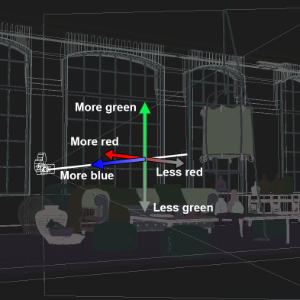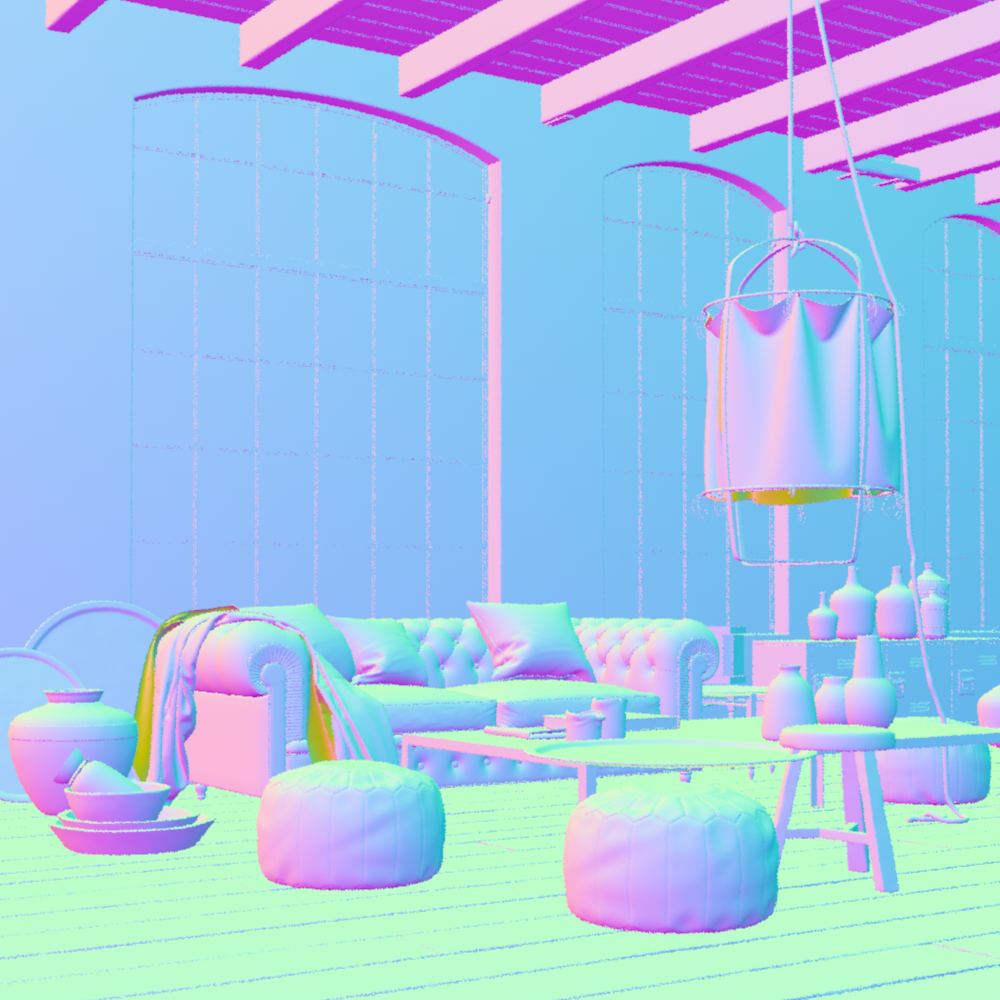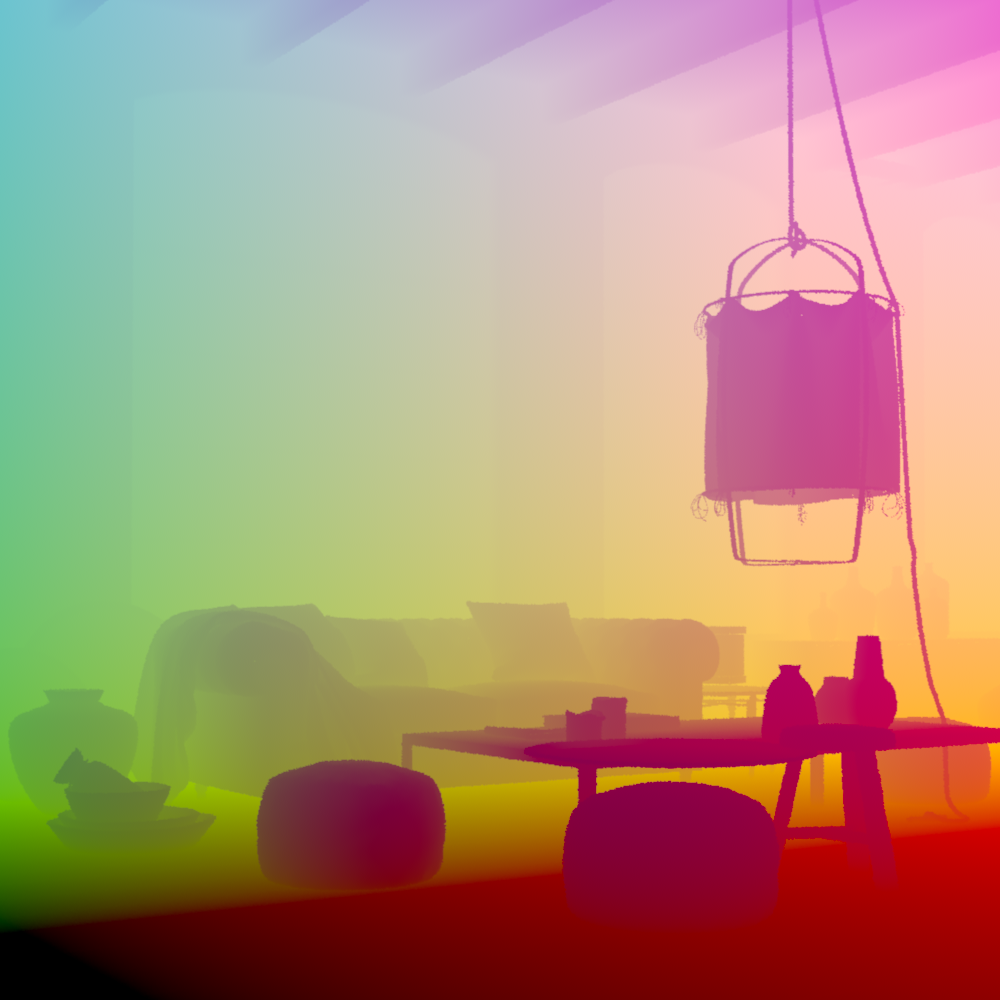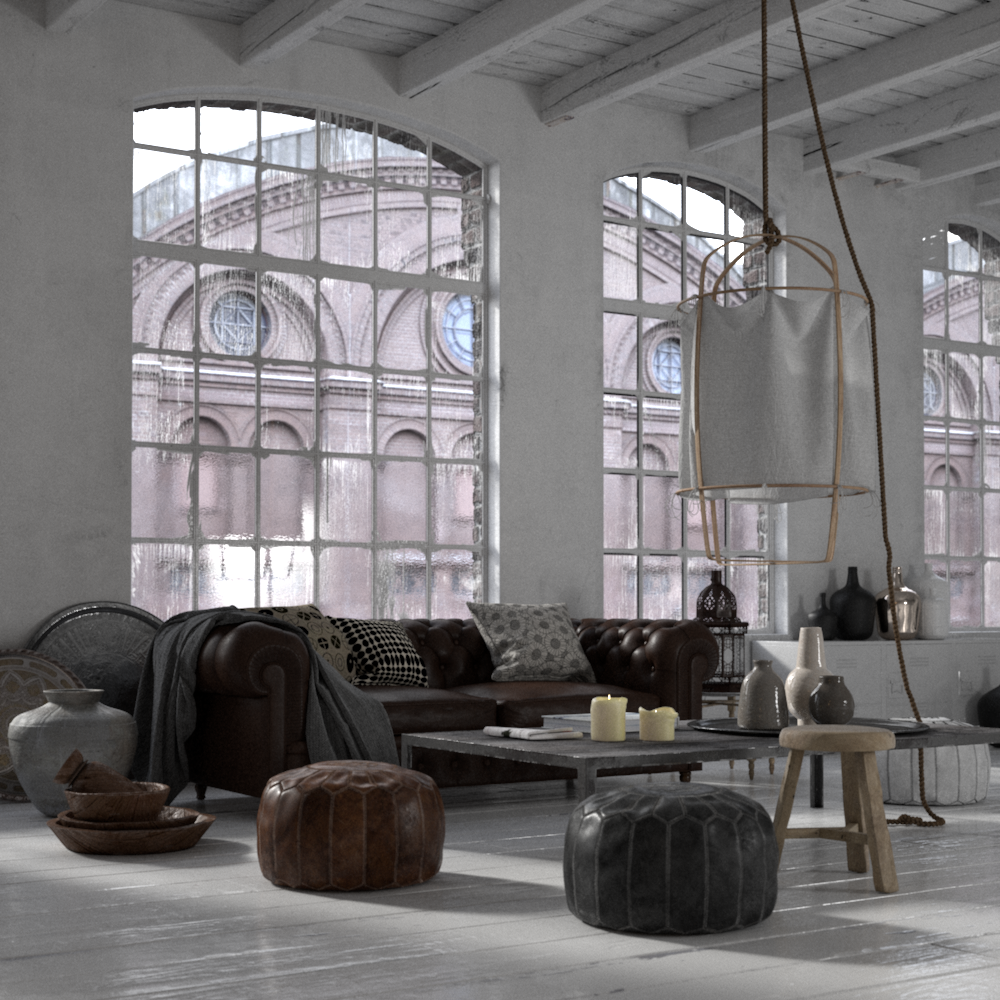VRayNormals
This page gives information on the Normals Render Element.
Overview
The Normals Render Element creates a normals image from surface normals in the scene. It stores the camera space normal map using the geometry's surface normals. The Normals Render Element is useful for adjusting lighting in the composite. For example, the red, green and blue channels can be adjusted in compositing software.
Bump maps are not represented in this render element; to include bump maps, use the Bump Normals Render Element. Also compare with the Sampler Info Render Element, which can render a normal map in camera (screen), object, or world space.
When Normals Render Element is saved as a separate render channel, its output value is kept between [0;1] range; if saved as a V-Ray raw image, its output value is in the range from -1 to 1.

UI Path:
||Render Setup window|| > Render Elements tab > Add button > VRayNormals
Parameters
This render element is enabled through the Render Elements tab of the Render Setup window in 3ds Max and displays its parameters in a rollout at the bottom of the window:
vrayVFB – When enabled, the render element appears in the V-Ray Virtual Frame Buffer.
deep output – Specifies whether to include this render element in deep images.
Normals Color Generation
The Normals Render Element uses screen space to determine the colors in the render element. With screen space in the camera view:
The X axis runs left-right perpendicular to the camera viewing angle. This is represented in the Red channel of VRayNormals with 1 being left-facing geometry and 0 being right-facing geometry.
The Y runs up-down perpendicular to the viewing angle. This is represented in the Green channel of VRayNormals with 1 being up-facing geometry and 0 being down-facing geometry.
The Z runs forward-back to the viewing angle. This is represented in the Blue channel of VRayNormals with 1 being forward-facing geometry and 0 being back-facing geometry.

Screen space XYZ coordinate system
relationship to camera and RGB colors

Full VRayNormals Render Element
Common Uses - Relighting
The Normals Render Element is useful for changing the appearance of lighting in a scene in a composite without the need for re-rendering.
In the example below a relighting workflow is used at a composite level to change the lighting in the scene. Note that it does not create any extra shadowing. This example is exactly the same under the hood as that shown in the Bump Normals Render Element page with the only change being that the Normals render element was used here instead of the Bump Normals render element.

Normals Render Element

The Point Position pass
(The VRaySamplerInfo Render Element was used to create this in
World space with a point multiplier value of 0.001)

Original Beauty Composite

Resulting re-lit Composite